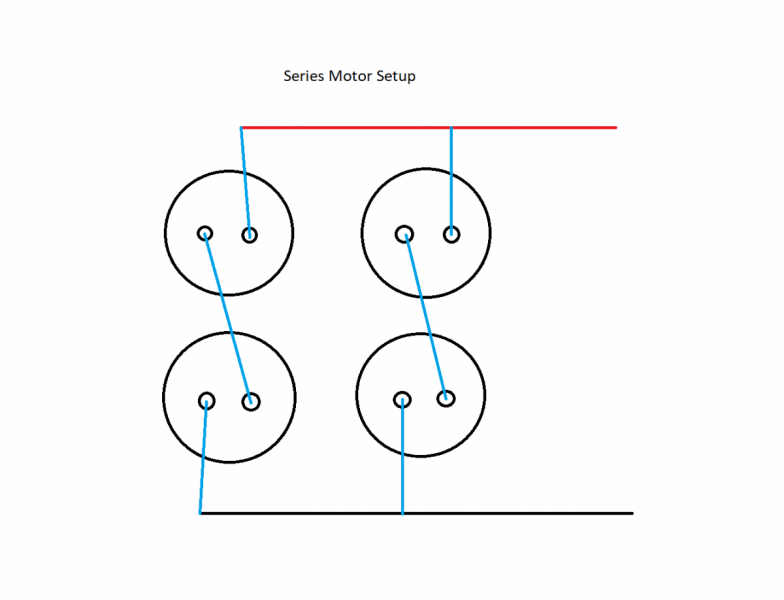So I was in English Class today thinking about Nerf mods as usual when I came across an interesting solution I have been having with two stage flywheel builds. In a typical single stage build the motors are wired in parallel so that the entire voltage of the battery drops across each motor causing them to spin at their max rpm for the given voltage of the battery. However this means that the maximum current drawn by the motors in this setup is the sum of their stall currents. In a single stage setup this will top out at ~50A for the thirstiest motors and shouldn't be that much of a problem for a typical 3s battery. However in a two stage or more build with 4+ motors being used, this current draw could be over 100A! Not only is this much more than many 3s batteries are rated for, but it is incredibly dangerous. However, by rethinking the motor wiring, I think this issue can be solved. By wiring each set of motors in series and them those sets in parallel, the amount of current drawn is halved. On the flip side, double of the amount of voltage is required to spin the motors to the same RPM. I have been doing some searching and found this 6s battery which I think should be able to accomplish the job and isn't too much more expensive than a 3s. I have some diagrams below showing the difference in wiring. I'd like to know what you guys think since I'm only 85% positive on my physics.
Edited by Quack, 28 November 2017 - 10:09 PM.

















